- Home
- Simon Winchester
The Map That Changed the World Page 5
The Map That Changed the World Read online
Page 5
However, there was more to it than this. Even if the theoretical processes behind the formation of such figured stones were correctly guessed by these seventeenth-century philosophers, there was a host of additional unanswered questions: How did these figured stones get to all the places where they were found? Why did some kinds of rocks—those in wild moors of Devon, or in the mountains of North Wales, or the high hills of Shropshire—have almost no such stones buried within them, while other kinds, such as those that made the hills of Devon or were found in the quarries of Oxfordshire or the coalfields of Northumberland, possessed them in enormous numbers?
Why, as an early naturalist named John Rawthmell noticed in the 1730s, did most of these curious figured stones crop up inside those rocks that were to be found in a rough line that stretched in a northeasterly direction clear across England, from the cliffs of Dorset and via the Cotswold hills in the south, up through Leicestershire to Yorkshire and the great cliffs in the coast near Whitby?* And as corollary to this thought—if God was behind their distribution, why were the stones not left scattered around everywhere, to be found uniformly and randomly, like the stars?
It had been towards the end of the seventeenth century that the first very few and very bold observers raised (albeit timidly) the ultimate heretical thought: the possibility that perhaps, just perhaps, these objects actually were what collectors and scientists and countrymen had long been loath to consider admitting—the organic remains of the very creatures that they looked like.
It was men like Nicolaus Steno, a Dane, and Robert Hooke, a Briton, who blazed the trail: To them the unsayable became the irrefutable—these fossil stones, they were certain, had indeed once been living creatures.* Hooke argued his case particularly logically and meticulously. He identified three stages that could be witnessed on all sides, which he said demonstrated the three stages in the formation of a typical fossil.
In the first stage, wholly unpetrified bones, shells, and vegetable remains were to be found in beds of mud, peat, and moss. The rock around them was unformed, the fossils within still almost as organic as when they had been alive.
Then, second, in lignites and brown coals—the sedimentary beds that were not properly rocks but were slightly more solid and consolidated than mud and peat—there were bones, shells, and parts of trees and leaves that had been somehow changed. These specimens, which by now could perhaps formally be called fossils, had been half petrified. In their present-day resting place inside layers of half-formed rock, they too were half formed, being neither wholly organic, as when they were alive, nor yet wholly stone.
In the next stage they would become so. In layers of coal—a fully consolidated rock, though born from peat and lignite in turn—Hooke noted that there were leaf-, tree-, and other shell-like remains to be found that were as wholly coal-like, coal-colored, and self-evidently coal as coal itself. Could it perhaps be, he wondered, that great pressure, great heat, or complex physicochemical reactions had transformed the once organic remains into minerals, just as the mud had been transformed into peat, the peat into lignite, and the lignite into the solid black rock-mineral called coal? Could not a slow and uniform process, which had been so visible in the making of coal itself, work its mysterious magic on the life forms that had been present at the origin, turn them into stone, and make them into fossils?
Most scientists of the time still dismissed such ideas as laughable. What event, they asked tangentially, could possibly have swept these remains to where they were now found? Could Noah’s great flood (which was then implicitly and almost universally believed, as it would be for the better part of another century) have been so violent and so massive as to wash shells up onto mountaintops—where, it had to be admitted, they had been found? Could these creatures have been swept onto the land at the moment of Creation?
No to both, said the seers of the day: Noah’s flood was said in Genesis to have been a short and placid affair, and as for Creation—since it was widely accepted that the land was created before life—it would be impossible for any organic remains to be infiltrated deep inside the newly created rocks because there was no life in existence to be so inserted.
In addition it had not escaped the notice of some collectors that many of the figured stones they found represented animals and plants that did not seem currently to exist. This suggested, in other words, that if indeed the stones were relics, they were relics of living creatures that were no longer around and had since become extinct. Since extinction was an impossible, unthinkable event in any divinely created cosmos, then this notion too was invalid, inappropriate, and wholly wrong.
And yet, as the eighteenth century opened, so these long-held beliefs and prejudices were confronted with increasing vigor by counterargument, by solidly mounted challenges to the dogmas and received wisdoms and ecclesiastical imperatives of old, and, most important, by evidence.
The ideas of Steno and Hooke, however hostile their initial reception by the Church, however flaccid their initial acceptance by the public, began slowly to take root. At about the same time there came a vague, inexpressibly gossamer-fragile thought that there might be some kind of link between two of the concepts that were an implicit part of the fossil collector’s system of belief. People began to wonder if these stones might actually be the relics of living things, and placed where they were found by no less an agency than what they liked to call the Noachian Deluge—Noah’s flood.
Perhaps somehow the flood could be implicated in shifting these objects, even to where they now existed in the rocks of high mountain ranges and on the Oxfordshire meadows. Perhaps somehow this same flood could also be implicated in the process that created the objects in the first place. Perhaps the rocks and all that lay inside them—the Chedworth Buns, the pundibs, the oyster shells, the fern leaves, and the crystal corals, fish skulls, and lizard bones—had all somehow been precipitated or had crystallized themselves from the fluid of a universal, flood-created sea. Perhaps, if such things were demonstrably true, then maybe, just maybe, the matter of intense puzzlement that had already confused untold generations of naturalists—What were fossils and why were they found where they were?—might be solved.
The flood, in short, was to be the eighteenth-century answer to everything. Noah was now the key. Half a century before 1769, when William Smith was born, the notion that figured stones were just inorganic and petrified replicas, cunningly inserted inside rocks to prove the omnipotent genius of God, had been at last abandoned, conveniently forgotten, regarded if at all as a distant cosmic joke. A more modern and more reasonable science was on its way to being forged.
And if today the long survival of ideas about the flood, which must have colored and tainted the thinking of such an eighteenth-century observer as the young William Smith, seem more than a little ludicrous, then at least Smith was brought up free from having to believe that his pound stones and his pundibs were just minerals. He knew, as the thinking world was then coming to accept, that echinoids and terebratulids were not minerals at all, but, as Steno and Hooke had taught, had once been animals.
So even though William Smith was brought up in a society still in the firm grip of purblind churchly certainty, his scientific training—such as it was—allowed for a measure of liberality. James Ussher was still there on the margins, to confuse; to deny his beliefs was to risk being branded a heretic. But in the later decades of the eighteenth century it was also possible, and moreover acceptable, for a thinking student to suppose that life, far older than humankind and perhaps far stranger than humankind could imagine, might once have existed on the planet.
The corollary to such thinking was that the earth must in turn be far, far older than James Ussher had supposed. That, for the time being, had to remain unsaid. But that it could be thought, and that there was evidence to prove it, was for the young Oxfordshire man, a liberating realization—a realization that helped in no uncertain manner to foster the new science that he was soon, and at first almost unwittingly,
to help establish.
4
The Duke and the Baronet’s Widow
Harpoceras falciferum
A fully equipped English duke, grumbled Lloyd George to what he knew would be a sympathetic working-class Edwardian audience on Tyneside, cost as much as two dreadnoughts, was every bit as great a terror, and lasted a great deal longer.
Which was not, it has to be said, an exact description of the third duke of Bridgewater. Francis Egerton, who was born in 1736, succeeded to the title when he was only twelve, gave much of his money and his collections to the government, and allowed the dukedom to die with him in 1803. He was a startling exception to Lloyd George’s general argument, in other words: This particular dukedom of Bridgewater cost precious little and lasted almost no time at all.
Yet in one sense the prime minister was right, for Bridgewater was very much a terror—in many ways, seen from today’s perspective, a quite appalling man. As a child he had been thought so stupid that his father, who was called Scroop, seriously considered making a codicil to his will to ensure that the boy, the second son, could never succeed to the title. The sudden and premature death of Scroop’s oldest son, however, scuppered the plan—and the child, Francis, who would become a duke variously regarded as ignorant, awkward, and unruly, duly joined his fellow aristocrats in the House of Lords in 1748.
He was at first widely disliked. As a young man he was irredeemably philistine, with little regard for art or society. He dressed intolerably badly. He loathed flowers and all kinds of ornamentation. He smoked like industrial Manchester, consumed pounds of snuff, never wrote letters, and had arguments with everyone. Though in time he became a great collector of painting and sculpture—more for their value than for their beauty, critics sneered—he wasted little time on what he regarded as the fripperies of life. He was a curmudgeonly bachelor and a misogynist who so despised women that he would not even allow one to serve him at table. He had only two apparent interests—the racing and riding of horses and, most significantly for this story, the building of canals.*
It was a fascination that became an obsession, for both the duke and his country. “Canal mania,” the national mood was called—and it was all begun by this strangely unpleasant man. In 1759 the duke of Bridgewater had completed a forty-two-mile stretch of artificial waterway, complete with locks, allowing him to ship coal from his own mines at Worsley, in Lancashire, directly into the heart of Manchester and then onward to the river Mersey. Since most of the price of coal was the cost of transporting it across country, the use of a canal slashed prices by as much as 50 percent. Smelling the prospect of limitless profits, every investor with spare change promptly jumped onto what seemed an unstoppable bandwagon.
Every bank, every entrepreneur, every developer, every engineer in England suddenly seemed to believe that the canal was the highway of the future. The owners of the turnpike roads howled their dismay. Farmers, angry that their land would be torn up, raised all manner of objections. But, one by one, Parliament passed canal acts and navigation acts at a staggering rate. Small armies of navvies—workers on the inland navigations—descended on the hills and valleys to carve and cement these revolutionary new trade routes into place.
Grand plans were conceived for connecting the whole country, Carlisle to Cornwall, Dover to Dumfries, with a network of waterways. The great existing trade rivers of England, the Thames, the Severn, the Mersey, and the Trent, were all to be linked. Maybe, one overambitious inventor suggested, the English Midlands could have their own canal that followed the contour lines and so did not need the costly and cumbersome mechanism of locks. (Since this canal would have been hundreds of miles long, requiring a horse to drag its barge the equivalent of a transatlantic crossing merely to go down to London, the plan was quietly dropped.)
Almost overnight, extraordinary economic miracles were realized. A brewer in Burton who previously could reckon to be able to sell his ales within a radius of only five or ten miles, found he could now load his barrels onto a horse-drawn canal boat and two days later have them delivered in London. No longer did Josiah Wedgwood have to hear how his fragile porcelains had been smashed to smithereens during their transit on the potholed public roads; now they could pass along the waterways, in the steady tranquillity of the floating world, and be safely in the shops of Liverpool and Oxford and Edinburgh in a matter of days. Exporters based in Birmingham no longer needed to route all their wares through agents in London: They could send their goods to the United States directly, by canal boat from the factory straight to the clipper ships waiting at the docks. And for the ordinary public, too, canals became immediate sources of betterment: No longer did coal double in price in the aftermath of heavy rains—now it was always cheap, and except in times of thick, canal-choking ice, bad weather scarcely ever affected its price, or the speed of its delivery, again.
The duke was quite right to foresee that indeed in those early, heady days the greatest canal cargo of all was to be coal. One horse, plodding quietly along ahead of a fully laden coal barge, could haul eighty times more than if it were leading a wagon down a muddy road—could take four hundred times as much as a single pack-horse. All of a sudden anyone with a coal mine, anywhere in England, now wanted a canal—so that his anthracite and his steam coal could be carried quickly and cheaply to the furnaces of the Industrial Revolution.
It has long been said that the people of England could never be poor, since they lived on an island made of coal and surrounded by fish. There had been an English coal-mining industry of sorts—via shafts and adits and opencut workings only—since the thirteenth century (though the Romans had known of coal and had probably burned it). From 1325 there is a record suggesting that a British mine exported a boatload of the strange black material to Pontoise, in northern France.
At first the black and flammable stones were used mainly for iron smelting and lime burning. It was only in Tudor times, when the climate turned chillier and demand for wood for house building soared, that people began to use coal to heat their homes. After that there was no stopping it. Wherever in the country coal was exposed on the surface—near Gateshead, close to Mansfield, outside Sheffield, in South Wales, near the Scottish town of Lanark—men clawed hungrily for it. It was convenient if the coal remained close to the surface: It was easy to work, and cheap. But it became so important a source of energy and heat that, by the fifteenth century, if a coal seam happened to plunge deep into the ground, then, discounting all risks in the name of profit, they promptly dug after it.
Coal miners were very limited at first. Mines flooded, they collapsed, noxious gases poisoned workers or burst into flame. But then came technologies that allowed miners to dig deeper, to pursue seams for longer, and as a result through the seventeenth and eighteenth centuries the industry advanced at a prodigious rate. Chain pumps were brought in from Germany, and mines became drier. Thomas Newcomen invented the atmospheric engine, allowing pits to go deeper, and allowing drowned mines to be pumped out and worked again.
At around the time of Smith’s birth, as we have seen, James Watt came along with his condensing steam engine, and mines could be dug to reach seams four and five hundred feet deep; and then again a decade later, once Watt’s double-acting steam engine had been perfected and its rocking beams had been adapted to move huge iron wheels, so everything changed. Air could be pumped down to the miners, water could be pumped from where it gathered, elevators could be created that would speed workers down to the coalface and that would haul them and their coal back up to the surface again.
In 1800 all Britain’s coal mines, in which men were now working as deep as a thousand feet below the surface, were producing a million tons of a variety of types of coal each year. Landowners realized that they possibly had beneath their lawns and meadows and forests huge seams of coal that could make them rich beyond their dreams. Everyone was suddenly on the lookout for dark rocks, for traces of blackness, for hints that somewhere below might be a lode of that rich, soft, sweet
-smelling substance that was for England what emeralds and silver and diamonds were elsewhere. Pits were dug and quarries were clawed—but often recklessly, incautiously—at every spot where the earth seemed to offer up its dark temptation. More often than not the darkness was a chimera, a black shale, a slate, a mudstone, which had no more chance of burning than granite. Failures dogged the diggings of all too many countrymen: Some sort of guide, some sort of a map was needed, a way for men to forecast with some accuracy what might lie underneath them.
Men had been mining coal in northern Somerset since the thirteenth century—there is a cryptic reference in Roman writings to a house in Bath having been heated by such stone, locally mined. The Carboniferous Coal Measures that outcrop along the flanks of Pennine Hills in northern England, and in South Wales and southern Scotland, outcrop around the Bristol Channel too. The same hot dark swamps that eventually fossilize to produce coal existed south of Bath three hundred million years ago, just as they existed near Durham, Leeds, Mansfield, Lanark, and the Rhondda Valley and—since coal measures have been laid down all over Europe—just as they existed also in Silesia and Westphalia, in France and Belgium and across vast tracts of Russia.
The conditions in which they were formed were, miraculously for Europe’s economic development, much the same everywhere. There were fetid and swampy jungles, all mud, dead ferns, and sagging branches of clubmosses and horsetail. The steamy, clammy air was thick with clouds of insects, including dragonflies as big as thrushes. Scorpions and millipedes scurried and squirmed among the grasses and primitive leathery trees. Amphibians—from large thickheaded crocodile-like beasts to more gentle salamanders—splashed and lumbered through the steaming pools.

 The Surgeon of Crowthorne
The Surgeon of Crowthorne Korea: A Walk Through the Land of Miracles
Korea: A Walk Through the Land of Miracles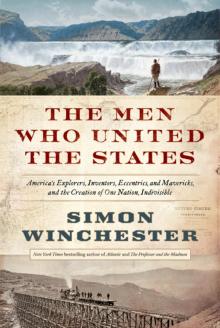 The Men Who United the States: America's Explorers
The Men Who United the States: America's Explorers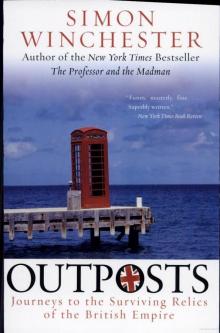 Outposts: Journeys to the Surviving Relics of the British Empire
Outposts: Journeys to the Surviving Relics of the British Empire Atlantic: Great Sea Battles, Heroic Discoveries, Titanic Storms
Atlantic: Great Sea Battles, Heroic Discoveries, Titanic Storms The Professor and the Madman: A Tale of Murder, Insanity
The Professor and the Madman: A Tale of Murder, Insanity A Crack in the Edge of the World
A Crack in the Edge of the World The Perfectionists: How Precision Engineers Created the Modern World
The Perfectionists: How Precision Engineers Created the Modern World The Man Who Loved China: The Fantastic Story of the Eccentric Scientist
The Man Who Loved China: The Fantastic Story of the Eccentric Scientist The River at the Center of the World: A Journey Up the Yangtze
The River at the Center of the World: A Journey Up the Yangtze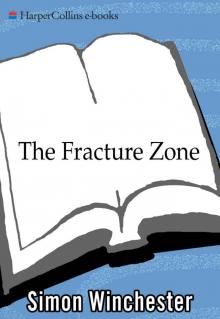 The Fracture Zone: My Return to the Balkans
The Fracture Zone: My Return to the Balkans The Map That Changed the World
The Map That Changed the World Krakatoa: The Day the World Exploded
Krakatoa: The Day the World Exploded The Man Who Loved China
The Man Who Loved China The River at the Centre of the World
The River at the Centre of the World Bomb, Book and Compass
Bomb, Book and Compass The Perfectionists
The Perfectionists The Meaning of Everything
The Meaning of Everything Exactly
Exactly Atlantic
Atlantic Korea
Korea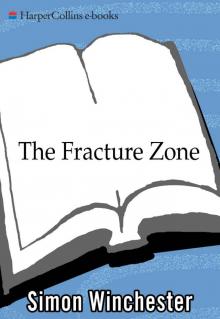 The Fracture Zone
The Fracture Zone Pacific
Pacific Krakatoa
Krakatoa The Professor and the Madman
The Professor and the Madman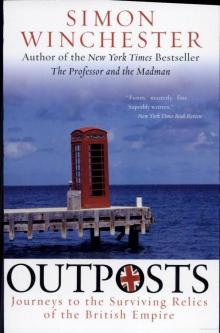 Outposts
Outposts